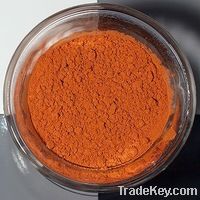Product Description
The name is derived from the Arabic rahj al ghar, powder of the
mine. The Latin term was sandarach and De Mayerne who was writing
in the seventeenth-century referred to it as rubis d'orpiment.
Pliny calls red lead "false sandarach," true sandarach being the
rare orange-red realgar.
Orpiment has a first cousin, realgar, also sulphide of arsenic,
which is beatiful an orange as or orpiment is a yellow, an
orange-scarlet.A bright orange-red mineral composed of arsenic
disulfide. Realgar occurs naturally in lead and silver ores along
with orpiment (arsenic trisulfide).
Realgar was once widely used as a pigment because of its bright
rich color, but perhaps less so than its mineral congener,
orpiment. Early occurrences are known for works of art from China,
India, Central Asia, and Egypt.
Specialists known as vendecolori (color sellers), a profession
unique to Venice, played a crucial role in stimulating color
experiments by introducing many new pigments, such as the yellow
orpiment and reddish-orange realgar that became the signature hues
of Venetian painting.
In European painting, apart from fairly regular use in Venice in
the *6th-century, the pigment occurs occasionally until about the
middle of the *8th-century. It is a usual choice for the bright
orange flowers depicted in Dutch *7th-century paintings, and
enjoyed moderately regular use in British *7th- century and
*8th-century painting,
| Country: |
Malaysia |
| Model No: |
-
|
| FOB Price: |
(Negotiable)
Get Latest Price
|
| Place of Origin: |
- |
| Price for Minimum Order: |
- |
| Minimum Order Quantity: |
- |
| Packaging Detail: |
- |
| Delivery Time: |
- |
| Supplying Ability: |
- |
| Payment Type: |
T/T, L/C |
| Product Group : |
- |

